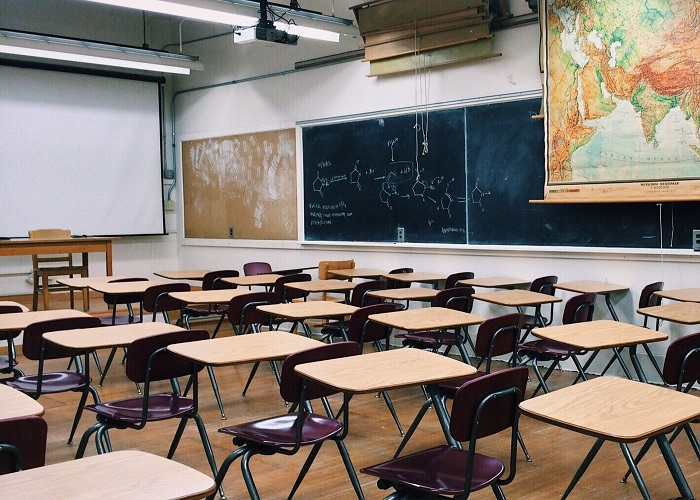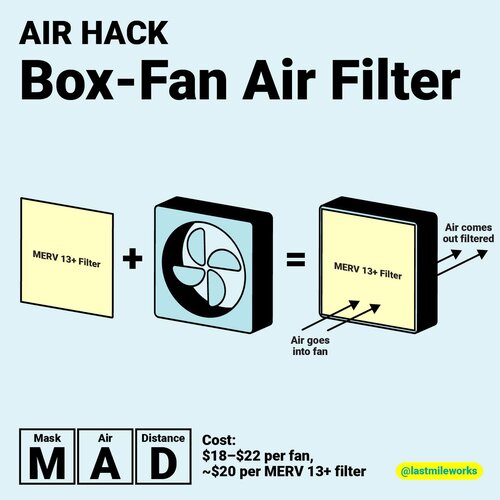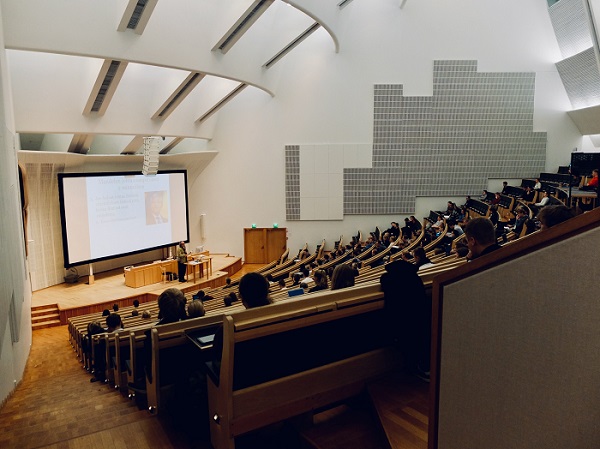“The air is the thing.”
There is a growing demand for engineers to evaluate and design ventilation and filtration systems to improve indoor air quality as part of the reopening phase of the COVID-19 pandemic.
School districts are currently developing plans for teachers and students to safely return to classrooms, and they will use the summer to upgrade facilities and to study the most impactful health and safety measures.
A May 2021 report by the Johns Hopkins Center for Health Security has many useful answers. The report, “School Ventilation: A Vital Tool to Reduce COVID-19 Spread,” found that ventilation improvements for K-12 schools are cost-effective measures to reduce the transmission of COVID and other infectious diseases, as well as generally benefit students’ overall health and learning ability.
“During the COVID-19 pandemic, it is even more important that ventilation problems in K-12 schools be addressed now,” researchers said. “Along with other mitigation measures, improvements in ventilation in K-12 schools can decrease the risk of SARS-CoV-2 spread.”

As classrooms begin to reopen, there’s an increased interest in ensuring the air students breathe is safe.
The report reviewed engineering best practices and medical guidance, and it is based on interviews with 32 experts in air quality, engineering, education, and other fields. Recommendations included: upgrading HVAC systems (to MERV 13 if possible); installing HEPA air filtration systems in classrooms; making investments in air filtration rather than expensive “deep cleaning”; and installing new mechanical ventilation systems. The report also called for a federal task force with engineering and HVAC experts to offer guidance and assess improvements on indoor air quality.
Gigi Gronvall of the Johns Hopkins Center for Health Security told The Huffington Post that now is the time for schools to make improvements to air ventilation and filtration systems. “Some schools put way too much emphasis on cleaning,” Gronvall said in the HuffPost article. “Cleaning is, of course, important…but that’s not how COVID is transmitted. The air is the thing.”
More technical information on Building Readiness Plans, reducing aerosol exposure, and system calculations is available from the American Society of Heating, Refrigerating and Air-Conditioning Engineers (ASHRAE).
IMS has recently found that more and more public agencies – especially school districts and colleges – are seeking professional services to evaluate indoor air quality and to design new systems. IMS covers current RFPs/RFQs and tracks upcoming projects through Advance Notices for its architectural, engineering, and consulting clients.
In the first six months of 2021, IMS has covered at least 38 engineering/consulting projects with a specific focus on “indoor air quality.” There were 49 of those projects in all of 2020; 59 in 2019; 68 in 2018; and 43 in 2017.
Some of these projects are funded by COVID-19 relief measures such as the Elementary & Secondary School Emergency Relief Fund. In addition to the number of new projects, the range of services sought in these RFPs/RFQs is notable.
Design build projects have been the most popular, and include:
* Crook County School District in Oregon released an RFP in June 2021 for design build services to improve the indoor air quality and HVAC systems in the Powell Butte Community School Building (IMS 577334).
* Clinton City Schools in North Carolina issued an RFQ in June 2021 for design build services for HVAC upgrades to improve indoor air quality at Langdon C. Kerr Elementary School and Butler Avenue Elementary School (IMS 575587).
* In California, the Compton Unified School District released an RFP in May 2021 for design build services for indoor air quality ventilation upgrades and improvements on a District-wide basis (IMS 573575).

While many places await a permanent solution for ensuring air quality, Johns Hopkins proposes invoking the spirit of MacGyver to easily create portable and cost-efficient air purifiers. (Source: COVID Straight Talk)
Other agencies are seeking architects and engineers for design services:
* North Carolina State University issued an RFP in June 2021 for design services to refurbish and modernize the AHU-1 system to extend the life and improve the indoor air quality for Jordan Hall (IMS 576432).
Some school districts and colleges are seeking engineering evaluations to upgrade ventilation and filtration systems:
* College of the Redwoods in California issued an RFP in June 2021 for a comprehensive assessment of the HVAC systems in several buildings at the Eureka Campus and Del Norte Education Center (IMS 578651). A goal for the project is to “Maximize outdoor air and increase filtrations efficiency, and evaluate the use of additional air cleaning systems to help mitigate the spread of COVID-19.”
* Caswell County Schools in North Carolina released an RFQ in May 2021 to conduct assessments of indoor air quality conditions and HVAC equipment functionality, as well as to prepare a plan and budget for corrective work (IMS 573897).
School districts commonly issue RFPs for testing services, but now agencies are adding biological contaminants like bacteria and viruses to the bid sheet:
* In Florida, Miami-Dade County Public Schools issued an RFQ in June 2021 for consulting and testing services for asbestos, lead, mold, carbon dioxide, radon, volatile organic compounds, bio-contaminants, and other indoor air quality and environmental concerns (IMS 408835-3).

The availability of funding sources for “School Ventilation” will aid many school districts, as the cost of improving air quality can be steep when factors like unit power draw are taken into account. (Source: Dom Fou)
And then there are projects that seek air quality improvements through a “performance contract”:
* The Harrison County School District of Mississippi released an RFQ in June 2021 for energy service companies to provide indoor air quality services throughout the District (IMS 576201).
* In Mississippi, the Bay St. Louis-Waveland School District issued an RFQ in June 2021 for indoor air quality services using the energy performance contracting method (IMS 577865).
These recent projects signal the beginning of a trend. With compelling research from the “School Ventilation” report and federal funding available, more school districts will have the opportunity to upgrade their air filtration and ventilation systems. It would be a good investment.
“As new, potentially more transmissible variants of SARS-CoV-2 continue to emerge, broad improvements in indoor air quality are important for reducing transmission,” the Johns Hopkins Center for Health Security report said. “Improvements to ventilation are a good use of the COVID-19 relief funds provided to K-12 schools.”

